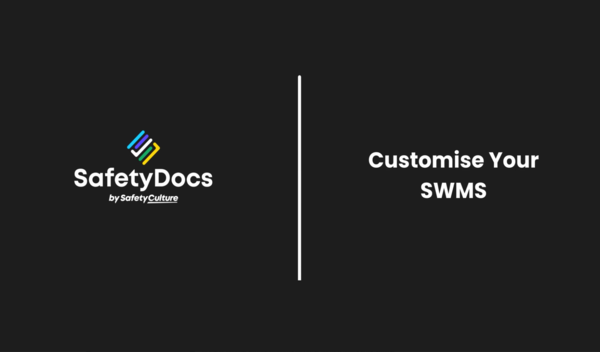Bollard Speed Bump Tactile Paving Safe Work Method Statement
- Instant Document Delivery via Email.
- Add to your existing management system.
- Can assist in ensuring workers are adequately trained.
- Customisation instructions provided.
- Microsoft Word Format (Fully editable).
- Only pay once (no subscriptions required).
Bollard Speed Bump Tactile Paving Safe Work Method Statement
This Safe Work Method Statement (SWMS) is designed for the installation of bollards, speed bumps, and tactile paving. It serves as an essential guide, covering the hazards and controls associated with the installation process in various settings such as crossings, pedestrian islands, and car parks.
Job Steps Covered in Bollard Speed Bump Tactile Paving SWMS
- Training: Focuses on educating personnel about hazards and safety measures.
- Planning: Emphasises the importance of planning for a safe installation process.
- Liaise with Coordinating Road Authority: Guidelines for coordinating with road authorities.
- Liaise with Rail Network Owner: Steps for coordinating with rail network owners.
- Check Weather Conditions & Prepare: Considers the challenges of outdoor operations.
- Arrival On-site, Assess On-site Conditions & Work Area Set-up: Steps for site assessment and setup.
- Environment: Environmental considerations and controls.
- Housekeeping: Maintaining a clean and safe work environment.
- Manual Tasks: Safe handling and movement of materials.
- Working with Powered & Non-powered Tools: Safe use of tools.
- Hazardous Substance/Chemical Use: Guidelines for safe chemical use.
- Preparation & Installation: Method for preparing and installing.
- Working with Cement: Steps for safe cement work.
- On Completion: Finalising installation operations.
- Emergency Response: Emergency response for incidents during operations.
Each purchase of our SWMS comes with a complimentary copy of the Legislation & Codes of Practice Reference List, valued at $19.95. This valuable resource provides an up-to-date overview of relevant laws and standards, further supporting your compliance efforts.
Key Features of the SWMS
- High-Risk Construction Work (HRCW) Controls: Implements stringent controls for high-risk activities such as energised electrical installations or services and work next to a railway, shipping lane, or traffic corridor.
- Comprehensive Safety Measures: Includes controls for electrical equipment, elevated levels, slips, trips, falls, hazardous substances, hazardous manual tasks, outdoor work, silica dust, and environmental considerations.
- Environmental Considerations: Minimal environmental impact during operations.
- Coordination with Authorities: Provides essential guidelines for compliance and coordination with relevant authorities.
Who is it Suitable For?
- Contractors
- Site Supervisors
- Public Works Departments
- Safety Officers
Secure your Bollard Speed Bump Tactile Paving SWMS today and ensure your team is safeguarded while achieving compliance with safety regulations.
- Instant Document Delivery via Email.
- Add to your existing management system.
- Can assist in ensuring workers are adequately trained.
- Customisation instructions provided.
- Microsoft Word Format (Fully editable).
- Only pay once (no subscriptions required).
Bollard Speed Bump Tactile Paving Safe Work Method Statement
This Safe Work Method Statement (SWMS) is designed for the installation of bollards, speed bumps, and tactile paving. It serves as an essential guide, covering the hazards and controls associated with the installation process in various settings such as crossings, pedestrian islands, and car parks.
Job Steps Covered in Bollard Speed Bump Tactile Paving SWMS
- Training: Focuses on educating personnel about hazards and safety measures.
- Planning: Emphasises the importance of planning for a safe installation process.
- Liaise with Coordinating Road Authority: Guidelines for coordinating with road authorities.
- Liaise with Rail Network Owner: Steps for coordinating with rail network owners.
- Check Weather Conditions & Prepare: Considers the challenges of outdoor operations.
- Arrival On-site, Assess On-site Conditions & Work Area Set-up: Steps for site assessment and setup.
- Environment: Environmental considerations and controls.
- Housekeeping: Maintaining a clean and safe work environment.
- Manual Tasks: Safe handling and movement of materials.
- Working with Powered & Non-powered Tools: Safe use of tools.
- Hazardous Substance/Chemical Use: Guidelines for safe chemical use.
- Preparation & Installation: Method for preparing and installing.
- Working with Cement: Steps for safe cement work.
- On Completion: Finalising installation operations.
- Emergency Response: Emergency response for incidents during operations.
Each purchase of our SWMS comes with a complimentary copy of the Legislation & Codes of Practice Reference List, valued at $19.95. This valuable resource provides an up-to-date overview of relevant laws and standards, further supporting your compliance efforts.
Key Features of the SWMS
- High-Risk Construction Work (HRCW) Controls: Implements stringent controls for high-risk activities such as energised electrical installations or services and work next to a railway, shipping lane, or traffic corridor.
- Comprehensive Safety Measures: Includes controls for electrical equipment, elevated levels, slips, trips, falls, hazardous substances, hazardous manual tasks, outdoor work, silica dust, and environmental considerations.
- Environmental Considerations: Minimal environmental impact during operations.
- Coordination with Authorities: Provides essential guidelines for compliance and coordination with relevant authorities.
Who is it Suitable For?
- Contractors
- Site Supervisors
- Public Works Departments
- Safety Officers
Secure your Bollard Speed Bump Tactile Paving SWMS today and ensure your team is safeguarded while achieving compliance with safety regulations.


